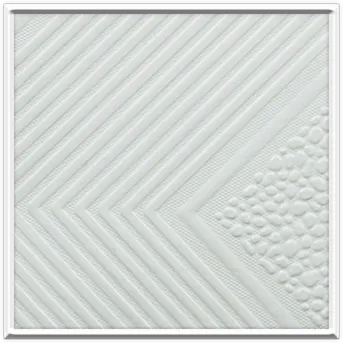Dec . 11, 2024 11:15 Back to list
ceiling t bar
The Artistic Appeal of the Ceiling T-Bar An Unseen Element in Design
In the world of modern architecture and interior design, certain elements often go unnoticed. One such element is the ceiling T-bar system, a crucial component of suspended ceilings that serves both functional and aesthetic purposes. As buildings strive for innovative designs and efficient use of space, the T-bar system has emerged as a fundamental characteristic, offering a blend of functionality, flexibility, and style.
Understanding the T-Bar System
The ceiling T-bar, which consists of metal frames arranged in a grid pattern on the ceiling, supports acoustic ceiling tiles, lightweight panels, or other decorative finishes. This suspended ceiling system is popular in commercial spaces, such as offices, schools, and retail environments, due to its versatility and ease of installation. Constructed from durable materials such as galvanized steel or aluminum, T-bars provide a sturdy and reliable structure that can withstand the test of time.
Functional Benefits
The functionality of the T-bar ceiling system extends beyond mere support. One of its primary advantages is accessibility. The grid framework allows for easy access to essential building systems, including heating, ventilation, air conditioning (HVAC), and electrical wiring. Rather than requiring invasive renovations to reach these vital components, maintenance personnel can conveniently remove ceiling tiles to work on the infrastructure without disturbing the entire ceiling.
Moreover, T-bar ceilings play a significant role in sound attenuation. Acoustic ceiling tiles placed within the T-bar framework can absorb sound, minimizing noise pollution and enhancing the overall acoustic quality of a space. This is especially beneficial in environments such as offices, where conversations and electronic equipment can create a distracting auditory atmosphere.
Aesthetic Integration
ceiling t bar

Beyond its functional attributes, the T-bar ceiling offers unique aesthetic possibilities. While many view suspended ceilings as purely utilitarian, designers have begun recognizing the opportunity to incorporate T-bar systems into the overall visual composition of a space. The grid pattern can be accentuated with various tile designs, materials, and colors, allowing creativity to come into play in otherwise mundane installations.
For instance, a contrasting tile color can be used to emphasize the T-bar grid, creating a striking visual effect. Alternatively, designers have experimented with unconventional shapes, such as hexagonal or triangular panels, which add a contemporary flair to an otherwise traditional ceiling system. These designs can transform a standard office or retail environment into an engaging and inviting space, emphasizing the importance of design in enhancing user experience.
Sustainable Solutions
As the global community becomes more conscious of sustainability, the T-bar ceiling system has also adapted to eco-friendly practices. Manufacturers are now producing ceiling tiles made from recycled and sustainable materials, such as mineral fiber or reclaimed wood. This shift not only reduces the environmental impact but also appeals to eco-conscious consumers looking to support green building initiatives in their projects.
Furthermore, the air gap created by the T-bar framework can be utilized for insulation purposes, improving energy efficiency within buildings. This advantage translates to reduced heating and cooling costs, contributing to a smaller carbon footprint and promoting responsible resource consumption.
Final Thoughts
In conclusion, the ceiling T-bar system is an often overlooked yet integral component of interior architecture. Its functional benefits, such as accessibility and sound absorption, combined with aesthetic possibilities, make it an invaluable asset in contemporary design. As sustainability becomes increasingly important, the T-bar system continues to evolve, offering eco-friendly solutions that align with modern values.
Whether in an office, school, or shopping center, the ceiling T-bar plays a vital role in creating spaces that are not only functional but also visually appealing. Designers and architects should not underestimate the power of this simple system; with a bit of creativity, the T-bar can enhance the character of a room, highlighting the importance of thoughtful design in our everyday environments. As we move forward, the significance of the ceiling T-bar will likely grow, reminding us that even the most utilitarian elements can yield extraordinary results.
-
Quality Ceiling Trap Doors & Access Panels | Easy & Secure AccessNewsAug.30,2025
-
Durable Ceiling T Grid Systems | Easy InstallationNewsAug.29,2025
-
PVC Gypsum Ceiling: Durable, Laminated Tiles for Modern SpacesNewsAug.28,2025
-
Pvc Gypsum Ceiling Is DurableNewsAug.21,2025
-
Mineral Fiber Board Is DurableNewsAug.21,2025
-
Ceiling Tile Clip Reusable DesignNewsAug.21,2025







